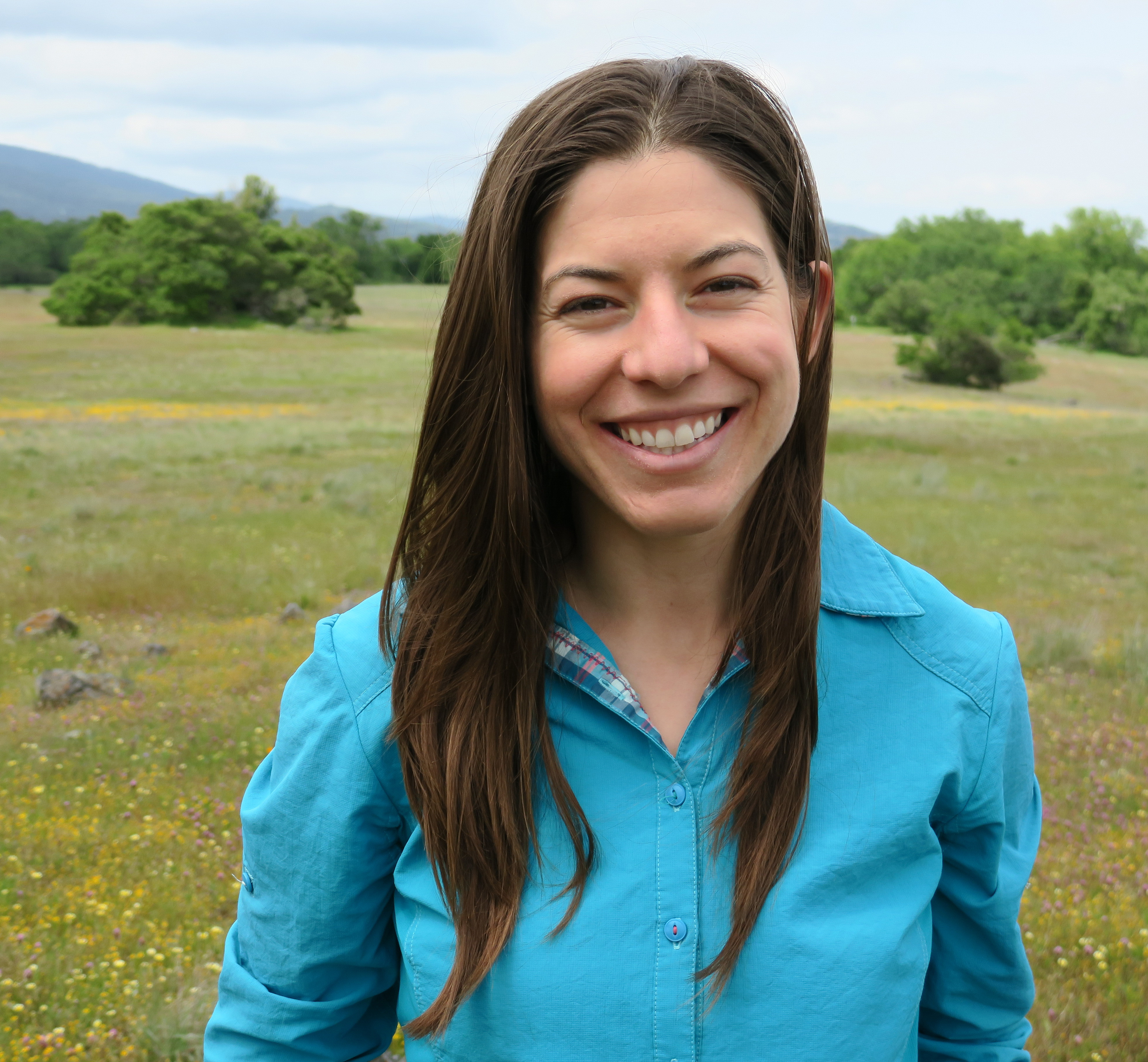Lauren Hallett, Community-Minded Thinker for People and Plants
NCEAS Portraits: Women in Science Edition
By Jenny Seifert

Lauren Hallett is a self-proclaimed NCEAS groupie. The assistant professor at the University of Oregon has participated in four or five working groups and now leads one of her own, which is synthesizing data from across Long-Term Ecological Research Network (LTER) sites to identify the factors that lead to stable ecosystems.
“I just really like the community. I find the weeks are very inspiring. So, I’ve taken every opportunity I can to get there,” said Hallett, alluding to the multiday, immersive workshops that being part of a working group entails.
A plant community ecologist, Hallett's affinity for community is perhaps inherent. She focuses on how and why plant species composition, or the makeup of the collection of plants in a given ecosystem, varies over time. Understanding how these communities change naturally versus under the influence of human activities, including global climate change, is important for environmental management, particularly when setting goals for restoration.
Hallett says her involvement in the NCEAS community has helped her ideas and abilities grow. One of her major areas of growth has been as a scientific programmer, which entails coding skills that are essential for synthesizing disparate data. She has come a long way, from barely being comfortable using R, the statistical software much-loved by open science practitioners (and NCEAS), to developing an “R package,” or a coding tool, that helps scientists measure species diversity over time, a project done in collaboration with and under the tutorship of experienced programmers in her working group at the time.
“That comfort with developing a reproducible workflow for my work is something that I learned only when I started doing synthesis work through NCEAS, and I really value it. I now teach a class in it at my university,” she said.
When it comes to women in science, nurturing a sense of community also rings true for Hallett.
Is there anything particularly challenging or helpful about the collaborative synthesis model for women?
LH: It really depends on the group’s leadership. It’s important when structuring a working group to be aware that junior people, and often junior women are less likely to speak up in a group. You really need to structure how you elicit feedback. Maybe you do small groups and then report back. Alternatively, going into the meeting, you could ask more senior members to look out for junior members. I think if it is structured that way, working groups can be incredibly empowering.
Kathy Cottingham is a great example. Watching her enter a room, she looks around for who is the most junior person, and then she sits by that person. When we have breaks, she will talk to them about their opinions, and then she’ll encourage them to voice them to the larger group. Men and women both do this, but I think having more women in the room helps facilitate this kind of engagement that brings in more people. It is an immeasurable impact. How many people does that subtle approach empower, and then what is the research they end up doing?
There has been a really nice cohort of women in my generation of science that have structured a lot of their careers around synthesis.
What notable contributions to your field have women made?
LH: Restoration ecology is a relatively young science – it was founded in the 1980s – and women have played an integral role from its inception. The original models for ecological restoration were really simplistic; they basically indicated that if you stopped degrading an ecosystem, it would return to its previous state. But ecological theory itself had advanced well beyond this, and many of the pioneers that integrated and advanced theory in restoration models were women. Katie Suding’s models of alternative stable states in restoration is a good example. One of the critical aspects of restoration ecology is that implementation is a central component, and here, too, women have been among the most effective at the practice of ecological restoration.
Also, some of the leaders in synthesis work in the LTER community have been women, and I think it has really set the tone for that culture.
What can institutions like NCEAS do better at elevating the contributions of women?
LH: The anecdote I would give here is the reason I am a plant ecologist. Looking back, I realized I had maybe two classes in my entire undergrad career that were taught by a female tenure-track professor. One of those was Melinda [Mendy] Smith, who has also done a lot of synthesis work with the LTER. I’d like to think I’m a grassland ecologist because grassland ecology is so fascinating. But in reality, I’m a grassland ecologist because Mendy was a grassland ecologist, and she was the only role model that even seemed remotely like me. She reached out and suggested that I spend a summer at the Konza Prairie, and that jumpstarted my career trajectory. My take on this anecdote is that representation really matters at institutions. You can’t change faculty diversity overnight, but having an eye to that I think is really important.
What is THE issue in women in science that is most important you to?
LH: Building on my experience, I think diverse representation in our academic institutions is essential. It is important not just for equity reasons, but also just for creating quality science. Without advocates and role models, great budding scientists often leave the academy. There’s no way to measure how much this slows our collective understanding of science, but my guess is the loss is substantial.
Meet other women in science in this special edition of NCEAS Portraits >>
